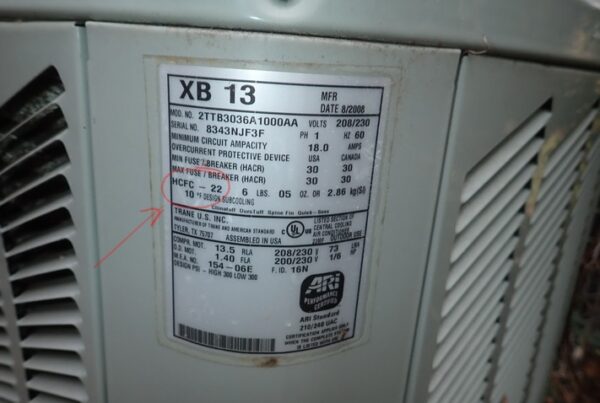Sorry, this is not a Herman Melville tale but something of more importance to landlubbers than to seamen.
Roofs, no matter where, what type or the use of the building beneath them, have several things in common. Most importantly they are expected to provide water protection and keep the interior dry. But a roof can only accomplish that mission if it can stand up to assault by winds.
New Jersey coastal areas can be subjected to hurricane force winds. Consulting the building codes and wind speed maps shows design wind speeds can be up to 115 miles per hour all along the shore. It is not just hurricanes that are a concern. Nor’easters can develop hurricane force winds and even thunderstorms can be dangerous.
Let’s look at how winds develop the forces that can be destructive. When winds pass over a building, they act on the roof much like air passing over an airplane wing. A negative air pressure develops that effectively tries to lift the wing or the roof surface. Good if you are traveling by air, not so good if your roof is not designed for high-lift forces.
Several factors determine how strong the forces will be. First is wind speed. The higher the wind speed, the greater the force. In fact, the force goes up rapidly with wind speed – a doubling of speed results in four times the force. Second is building height. Taller buildings equal higher forces for the same wind speed. Then there is terrain. A long unobstructed path for the wind to take as it approaches the building also causes higher wind uplift forces. Terrain category “B” defined as urban, suburban, wooded areas with structures closely spaced having the size of single family dwellings or greater, offers the best protection. At the other end of the range is category “D,” flat unobstructed approaches. Being on the shore is the worst. Building dimension and roof slope are also factors that influence wind developed forces.
Fortunately, significant research has been done that allows us to calculate wind generated forces on buildings so we can design wind resistant roofs. The American Society of Civil Engineers has developed ASCE-7 that defines the minimum design loads for building and how to determine loads including wind loads. The recommended methodology for calculating wind forces takes into account all the factors noted above.
Now, let’s see how high those forces can be.
A condominium at the shore can easily be 100 feet high, exposed to 115 mph design wind speed and have an unobstructed terrain. In the middle or “field” of the roof, uplift forces are calculated at 92 pounds per square foot for a typical size building. Sounds astonishing but it gets worse. At the perimeter and corners of the roof, uplift is 135 and 178 pounds per square foot, respectively. Drop the wind speed to 85 miles per hour and “field” uplift forces drop to 51 pounds per square foot. Still significant those speeds are expected to occur with much higher frequency than the 115 mph design condition.
Sometimes what fails in a wind event is not the roof itself but the edge or parapet. A parapet is that shallow wall at the roof edge, often with a metal cap. The parapet can be part of the exterior wall or fastened to the wall with bolts extending down into the wall. That connection is critical. Remember the example building above where uplift forces were calculated at 135 pounds per square foot at the perimeter? If that parapet or edge fails, wind will get under the roofing membrane. The combination of uplift on the top and pressure on the underside of a roofing membrane can tear it off in minutes, leaving the interior exposed to the rain that almost always accompanies the wind.
For a Condominium or Homeowner’s Association, the way to protect you from a wind disaster is simple. First, a design professional, like a professional engineer, can specify the type of roof and details of its installation to withstand the conditions expected at your location and the exact roof type and height of your building. The specification should take into account the most recent building codes. One recent change in roofing is the elimination of “ballast” or a layer of stones to weigh down a membrane in high-wind environments. Those ballast stones can become projectiles in a high wind and are no longer allowed in high wind areas. For those considering adding solar panels to a roof, now is the time to design for that improvement.
Manufacturers, too, have been proactive in developing membranes, fastening systems, adhesives, metal drip edge and parapet cap systems that can withstand Florida design wind speeds, let alone wind speeds in New Jersey.
Once an engineer has specified a roofing system for your project, get competitive bids, making it clear that a manufacturer’s warranty (not just the roofing contractor’s warranty) will be required. Amazingly, we have seen roof warranties for properties right on the beach with exclusions for wind damage. Usually, the manufacturer’s quality control representative will inspect the job in order for the warranty to be issued.
But don’t wait for an inspection at the end of the project. During construction, starting at tear off of the old roof, engage the professional engineer to perform inspections. He/she can inspect for condition of the parapet and edge to be fastened to the building, condition of the sheathing or roof deck to accept the new roof assembly, and other conditions to make sure the roof will be properly installed from the bottom up. Other inspections will confirm the materials and fastening systems are installed properly.
Finally, make sure any punch list is satisfactorily completed and the warranty from the manufacturer is in hand before releasing final payment to the contractor.
Reprint March 2017


